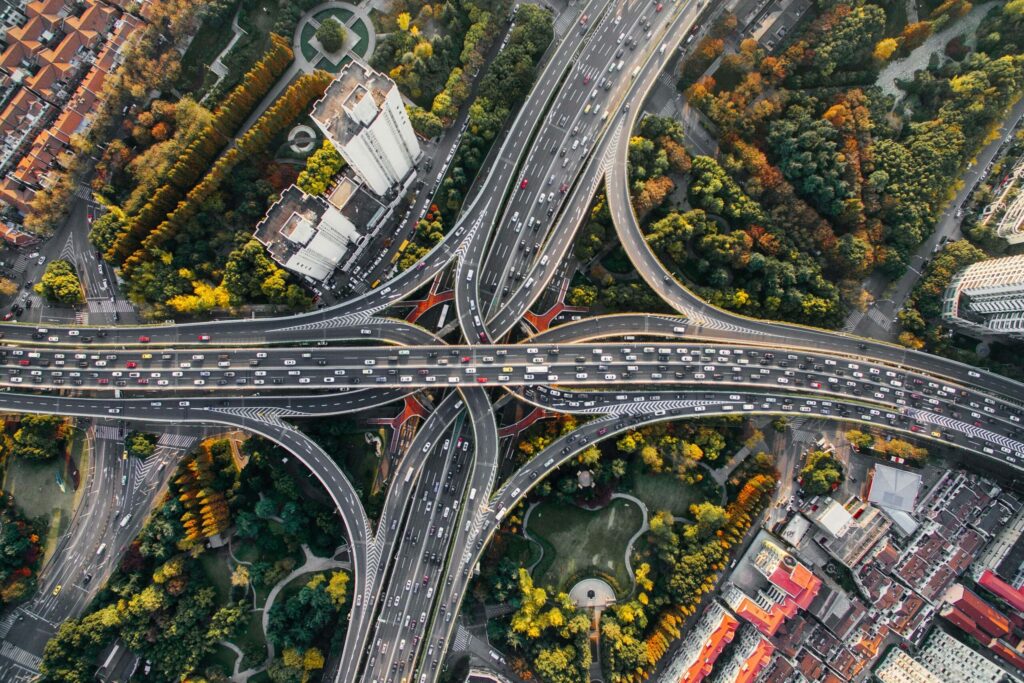
Urban roads are some of the most challenging spaces in a city. With a constant flow of traffic and the presence of pedestrians and cyclists, managing road safety can feel overwhelming. Thankfully, smart city technologies have paved the way for innovative solutions to address these challenges.
These technologies are changing how we think about road safety, offering new tools to reduce accidents and protect everyone on the road.
Smart city technology leverages data analytics, sensors, and connected devices to enhance urban infrastructure. This leads to urban environments that operate more efficiently, provide greater safety, and are more environmentally sound. As cities implement these systems, they significantly improve road safety, making them less prone to accidents.
Integrating IoT for Real-Time Data on Roads
One of the key innovations driving smarter urban roads is the Internet of Things (IoT). IoT devices installed along streets and in vehicles collect real-time data that can be used to improve safety. Traffic sensors and connected vehicles communicate with each other to create a network that can predict and prevent potential accidents.
According to a ScienceDirect study, an Internet of Vehicles (IoV) network was implemented in Hubei Province, China. The multi-tier framework tracked vehicle and roadside unit data and accurately predicted potential accidents. Such insights can help with better road safety management and take necessary actions to reduce collisions.
Another example of IoT use can be in traffic lights. They can adjust their timing based on traffic volume when equipped with sensors. If a backup is on one side of the intersection, the system can extend the light cycle to allow smoother flow. This dynamic response can help prevent traffic jams that often lead to accidents.
Furthermore, vehicles equipped with IoT technology can interact with traffic lights and surrounding cars. Should one sense a potential crash or abrupt stop, it can notify nearby vehicles to respond appropriately. This level of coordination between vehicles and infrastructure helps avoid accidents before they happen, ultimately making roads safer for everyone.
Smart Traffic Management Systems
Smart traffic management systems play a significant role in enhancing road safety. As a Nature Journal study notes, these systems help segment the vehicles on the road. This has potential applications like estimating traffic density and vehicle tracking. Data collected by sensors can help these systems accurately monitor vehicle speed based on the segmentation.
Employing sophisticated algorithms, these systems regulate traffic patterns by responding to live, current conditions. For example, they can direct drivers to alternate routes if there’s an accident or a construction zone ahead.
In addition to managing traffic flow, they can be programmed to prioritize emergency vehicles, giving them a clear path through congested areas. This ensures that fire trucks, ambulances, and police cars can respond to emergencies quickly without being hindered by traffic.
Within cities prone to regular traffic jams, these systems aid in easing congestion points and lowering the probability of collisions. This can be extremely useful in the most congested cities like Istanbul, New York, London, Chicago, and Mexico City. They are an essential part of creating roads that are more efficient and safer for everyone involved.
Pedestrian and Cyclist Safety with Smart Technologies
A significant concern for many urban roads is the safety of pedestrians and cyclists. While much of the focus is on vehicle-related accidents, non-motorized road users are also at high risk. For instance, Colorado Springs is trying to become a smart city. It has already leveraged technology for many things like smart waste management, smart parks, vehicle monitoring, etc.
However, it is still prone to many accidents despite using data and technology for road safety management. According to KKTV, a Colorado Springs man recently hit and killed a pedestrian in a hit-and-run case. The driver sped away from the scene and also tried to use a child as a shield to prevent an accident.
Such hit-and-run cases call for legal consequences, regardless of whether the victim is dead or injured. Here, the victim’s family can hire a car accident lawyer in Colorado Springs to seek justice. Securing legal representation for court appearances and negotiations with insurance companies can prove highly advantageous.
According to Springs Law Group, insurance company agents can try to settle with minimum liability. Lawyers are experienced and know all the tactics these agents may use. Therefore, they are better positioned to calculate damages and help you get optimal compensation.
Although still a challenge, smart city technologies are helping reduce the number of pedestrian and cyclist accidents. For example, pedestrian detection systems equipped with LiDAR technology are becoming increasingly common in cities with heavy foot traffic. These technologies can identify when pedestrians are crossing, allowing traffic lights to modify their timing to provide extended safe crossing periods.
Self-Driving Cars and Road Safety
A particularly notable advancement in smart city technology involves the emergence of autonomous vehicles. These driverless cars aim to reduce driver mistakes, a primary contributor to road collisions. Autonomous vehicles (AVs) are equipped with sensors, cameras, and sophisticated algorithms that enable them to “see” and respond to their surroundings.
As AVs become widespread, they can drastically reduce accidents caused by factors like distracted driving, speeding, and driving under the influence. These vehicles can communicate with each other and the traffic infrastructure to ensure a seamless traffic flow, reducing the chances of accidents.
However, this does not mean that AVs are never involved in crashes. In fact, Cruise recalled all of its 950 self-driving cars in 2023 after an accident in California. The accident occurred due to a software glitch in the system, resulting in a ban in California.
The number of accidents involving AVs is lower in most common scenarios. However, AVs are more likely to be involved in uncommon accidents. A Nature Journal study found that autonomous vehicle accidents have a 5.25 times higher chance of crashes at dawn or dusk. Moreover, they are 1.98 times more likely to have an accident in turning conditions. However, the overall number of collisions is still less than those caused by human drivers.
Frequently Asked Questions
How do smart city technologies impact emergency response times beyond traffic light prioritization?
Intelligent urban systems can connect with emergency responders, offering live information about road status, available detours, and the precise locations of incidents. This coordination allows dispatchers and responders to choose the fastest and safest route, even in unpredictable traffic situations.
Are there privacy concerns with the data collected by smart city systems?
Yes, privacy is a concern for many citizens who like to keep their data private, safe, and secure. Smart city technologies often collect data from vehicles, smartphones, and traffic systems. To address this, cities must implement strict data security policies and anonymize data whenever possible to protect individual privacy.
What role do mobile apps play in smart urban traffic safety?
Mobile apps can alert users about road hazards, traffic delays, and safe cycling or walking routes. Some apps are integrated with city systems to provide real-time updates, while others collect crowdsourced information from users to improve route planning.
As cities continue to integrate smart technologies into their road systems, the future of urban road safety looks increasingly promising. The combination of IoT devices, data analytics, autonomous vehicles, and improved infrastructure will create safer roads. However, it remains crucial for municipal authorities and citizens alike to remain aware of and actively participate in these ongoing advancements.


